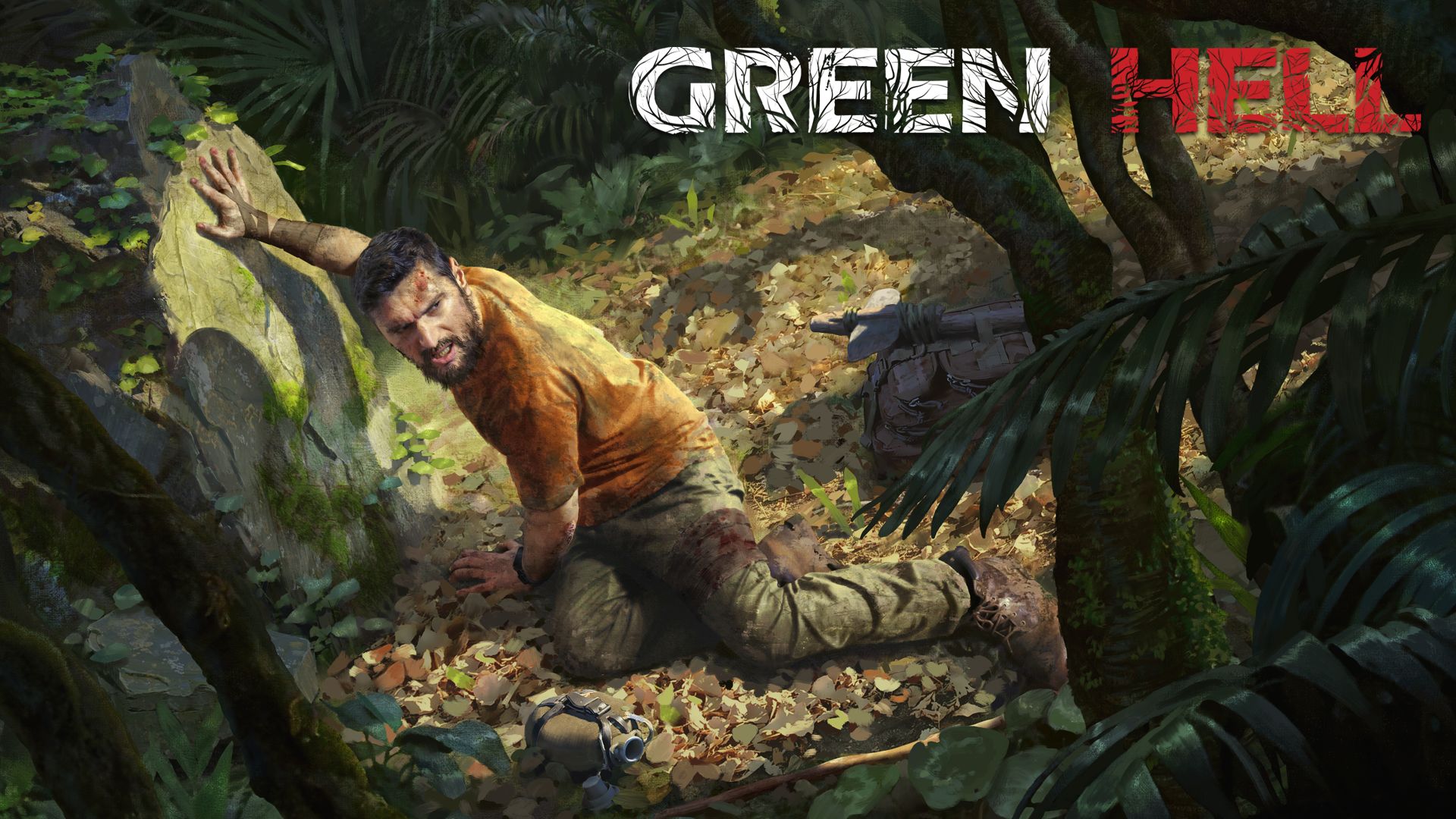Green Hell
Developer: Creepy Jar
Publisher: Creepy Jar
Platform: PC
Release Date: 5 September 2019
Price: $24.99 USD/$35.95 AUD – Available Here
Video Review
Overview
Green Hell drops players in the middle of the unforgiving Amazon rainforest with nothing but their wits to help them survive. The game is marking its departure from Steam Early Access with the brand-new story mode that will introduce players to the newly expanded map. Players will take on the role of anthropologist Jake Higgins as he embarks on a quest to find his missing wife Mia.
Story
The story in Green Hell is short but sweet. After a quick tutorial and introduction, players are tossed into the rainforest and expected to survive. The story is told through walkie-talkie conversations with Mia and drug-fueled visions. The plot’s pacing is tied to the player’s willingness to explore, as new areas unlock more conversations. While many of the twists are predictable, the story is delivered in a poignant manner. Although Jake is an anthropologist, the writers tend to avoid exploring the relationship between the locals and the rest of the world, opting to focus on Jake and Mia. It works well as it allows the writers to generally avoid sticky topics that would require a lot more time to fully explore than Green Hell is able to offer.

Gameplay
On the spectrum of survival game difficulties, Green Hell falls on the more difficult end of the spectrum due to its emphasis on realism. Developers Creepy Jar consulted with survival experts to develop the game, so players who thumbed through the pages of survival manuals like John “Lofty” Wiseman’s The SAS Survival Handbook will recognize some techniques in the game.
The game treads a fine line between a realistic experience and enjoyable gameplay. Unfortunately, Green Hell often falls on both sides of the line. The game is unforgiving in a good way. Players are never king of the jungle in Green Hell, but rather bouncing from just surviving to barely thriving. Mistakes like sprinting through the forest without paying attention is punished with a variety of poisonous creatures. Players must take a more methodical approach to the game; carefully planning their actions, being mindful of danger, and being prepared.
Combat is brutal. The hostile locals are almost as powerful as the player and large hostile animals are vicious. The only reliably safe way to score a kill is a headshot with a bow, but even that is no easy task as drawing the bow eats into the player’s stamina. Additionally, human enemies are more than happy to tilt the odds in their favour by swarming the player. Usually, the best way to survive combat is simply avoid it all together.
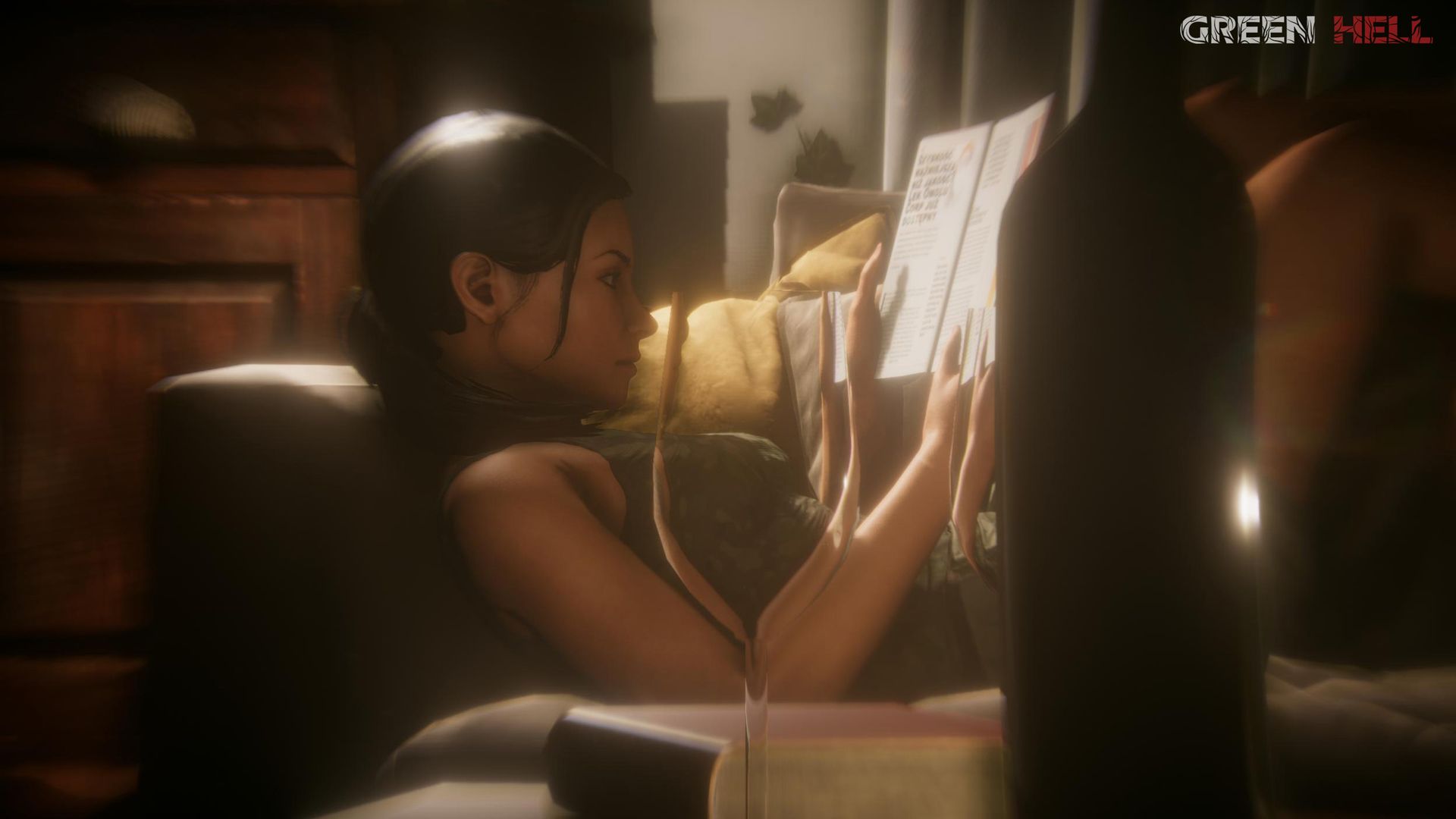
Green Hell excels at creating a constant struggle for resources. Unlike most survival games’ food and water meters, Green Hell opts for a more in-depth approach requiring a balance of all three macronutrients and water. Players will constantly be scavenging for food. Food decays over time, though cooking and drying can preserve food for a longer period of time. The spawn rate is low enough that staying in one spot isn’t feasible either, rather the game prods players into creating multiple bases or making expeditions around the map every other day or so to ensure a steady supply of food and materials. I much prefer this approach to survival games, as many often turn into technology tree grinds in the late game with the introduction of farms and other shortcuts.
The manual save system is frustrating considering death lurks around every corner. The game does not save when the player sleeps. It relies on the player remembering to save the game manually while in a shelter. Losing an hour or two of progress because you forgot to save is absolutely infuriating. Considering perma-death games are now an option, I think maintaining the current four save slots plus adding an auto-save slot that triggers every time the player goes to sleep would have been a better solution.
The inventory is visualized through a backpack, with different types of items stored in different pouches. Actual management is done Resident Evil style, with players needing to fit their items within a limited physical space. Additionally, players must also manage how much physical weight they carry, less they be slowed down to practically a crawl. Creepy Jar’s implementation gives inventory management a realistic feel that works well for the game but filling bowls with water is a frustrating ordeal. Once the backpack is open, players can grab items and move them around. Opening the backpack locks the camera angle. The angle can only be changed by dragging with right click. When the player has something in the hand, the camera no longer responds to right clicks. Players are simply forced to shuffle blindly in the direction of their fire so they can drop the bowl filled with dirty water in the cooking slot. The process of fetching water to boil gets especially bad once buildings are constructed.
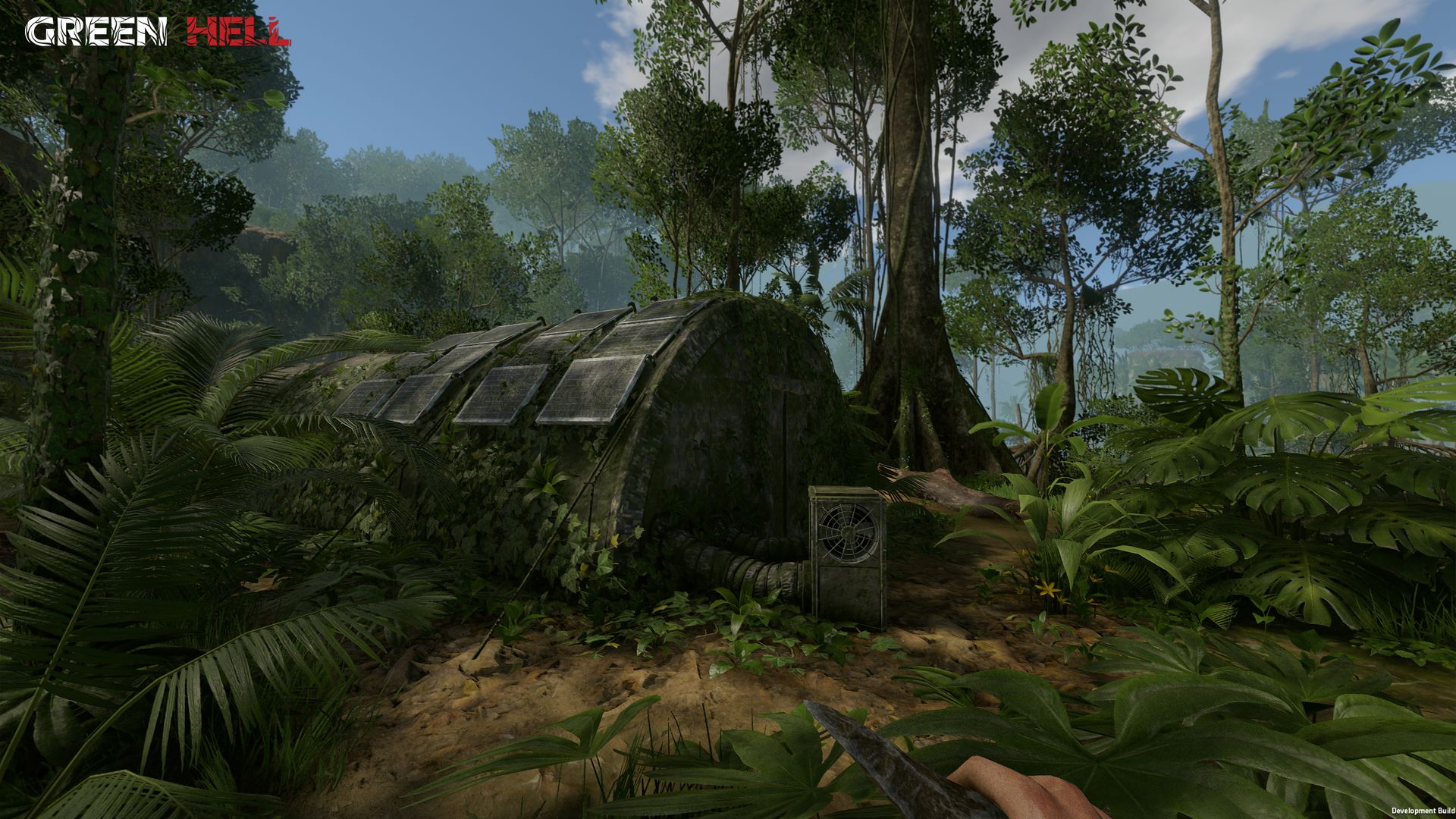
The crafting system feels a lot clunkier compared to inventory management. Building physical structures is handled best by the crafting system. Players use the notebook to place down a blueprint in the world and then fill in the required materials. It works great save for an issue with partially constructed blueprints disappearing from the world with no refund if a player leaves the area for a few days. Constructing carried items is more troublesome. Players need to open up the backpack and then the crafting table separately, then drag over individual items. The only way to check the ingredients in the recipe is to close the crafting menu and open the notebook. It’s an unwieldy system, especially for those of us with goldfish-like memory. An argument can be made that the item crafting system is attempting to be as realistic as possible but using a blueprint system like the physical structure system would be a more realistic and less annoying.
The controls are decent. The key bindings are kept close to the traditional FPS layout with only a few extra keys for menu management. The key binding options are flexible for the minority of users not using WASD layouts. Inventory management is mouse dependent as most options are accessed through the right click menu. The mouse movement feels a little flighty, as if there is some sort of mouse acceleration or some other modifier. It doesn’t feel as precise or controllable as the average FPS game. Hit boxes are usually on the generous side though, so it’s possible to get used to the mouse after a while.
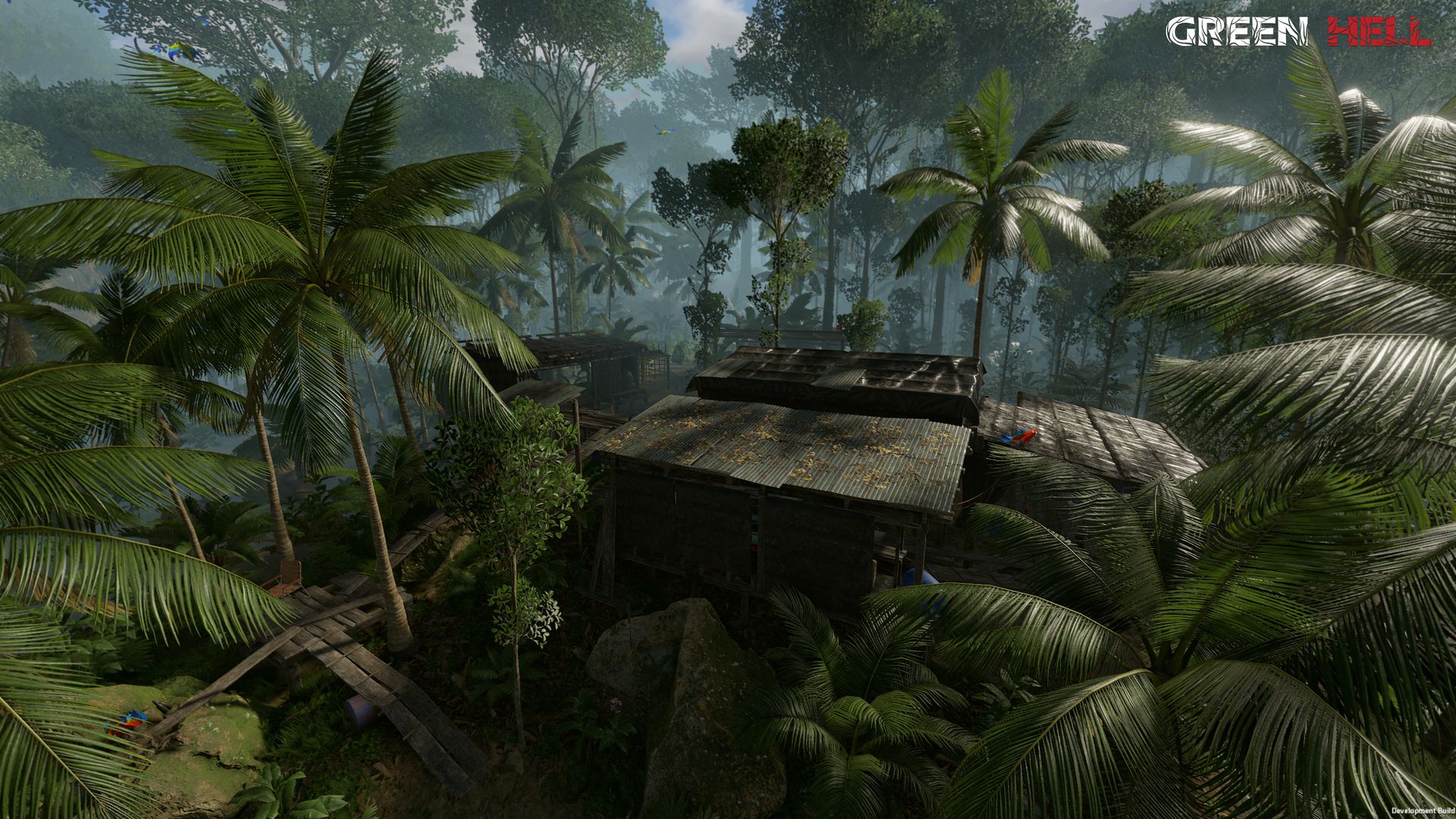
Visuals
Green Hell does an excellent job of creating a realistic Amazon Rainforest survival experience. The UI is minimal and immersive. Trees tower high above the player. The ground is incredibly lush with small shrubs, bushes, and saplings. There is enough ground cover to camouflage poisonous insects and reptiles from a distance, which plays a big role in forcing players to slow down when going off the beaten path. The heavy ground cover can make finding items on the ground a little difficult at times, so a slightly more generous item highlighter that emphasizes a few items near the mouse instead of one at a time would make life a little easier.
Audio
Green Hell offers a decent audio experience. The sound effects are good and create a cacophony of natural sound. Most animals have a unique sound that an experienced player will be able to distinguish. The biggest issue with the sound effects is the engine itself. The directional sound isn’t dead accurate, but it works well enough for tracking animals. The engine really struggles with properly distinguishing distance. The volume of sound effects suddenly increases in stages instead of smoothly increasing as players get closer. The effect is unnatural. It can also interfere with gameplay at times as it makes it more difficult to hear venomous animals like rattlesnakes while on the move.
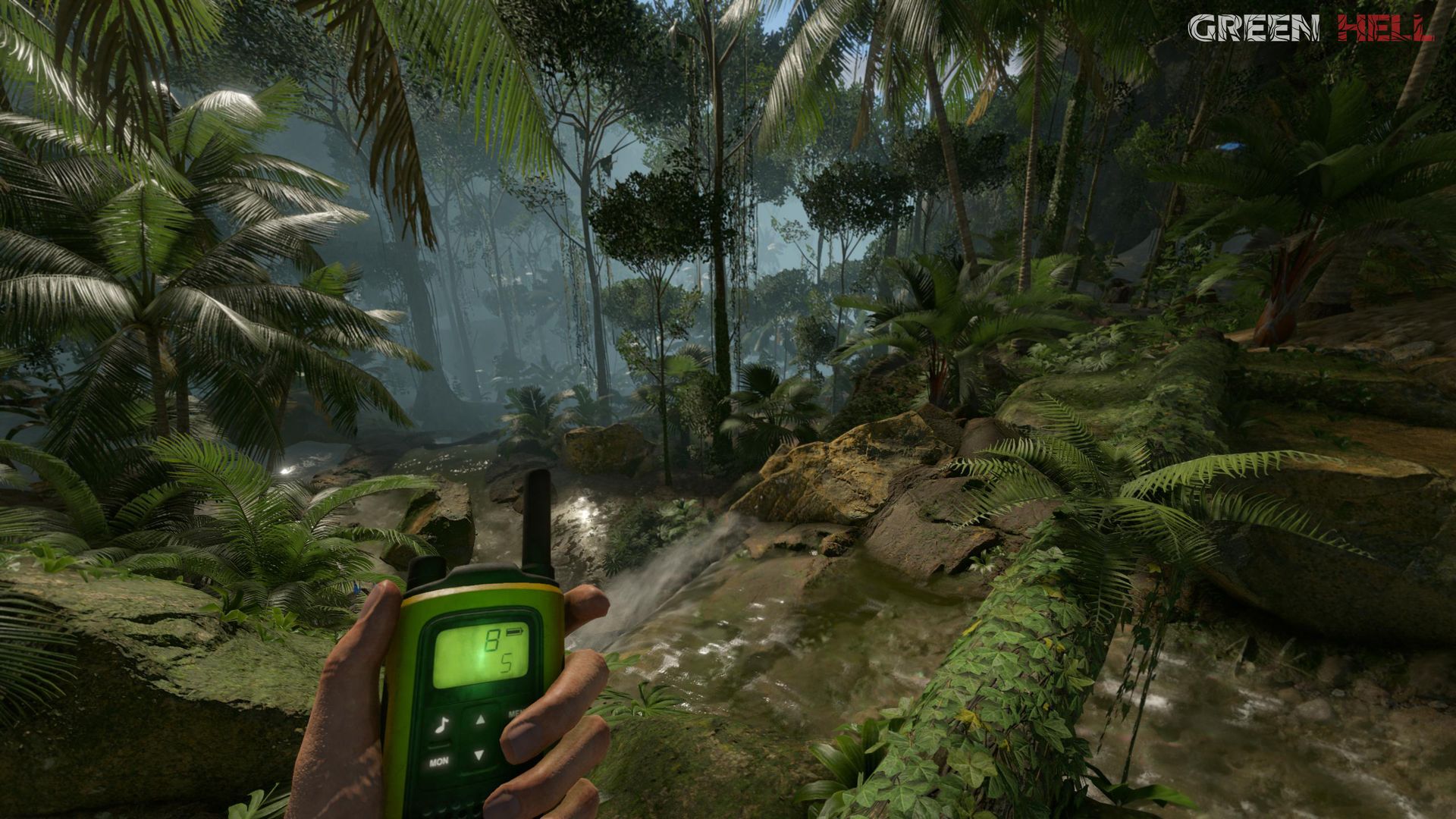
Overall
Green Hell occupies a niche in the popular survival genre. Its attempt at a realistic survival experience puts the developers in the challenging position where they must carefully balance realism with entertaining gameplay. In the end, Creepy Jar gets many things right. They create a convincing Amazonian survival experience that is challenging yet fulfilling. On the other hand, there are also several bewildering gameplay decisions that makes the game needlessly awkward. Survival game fans looking for a challenge will likely be able to overlook the game’s oddities and find an enjoyable hardcore experience.
Capsule Computers review guidelines can be found here.

